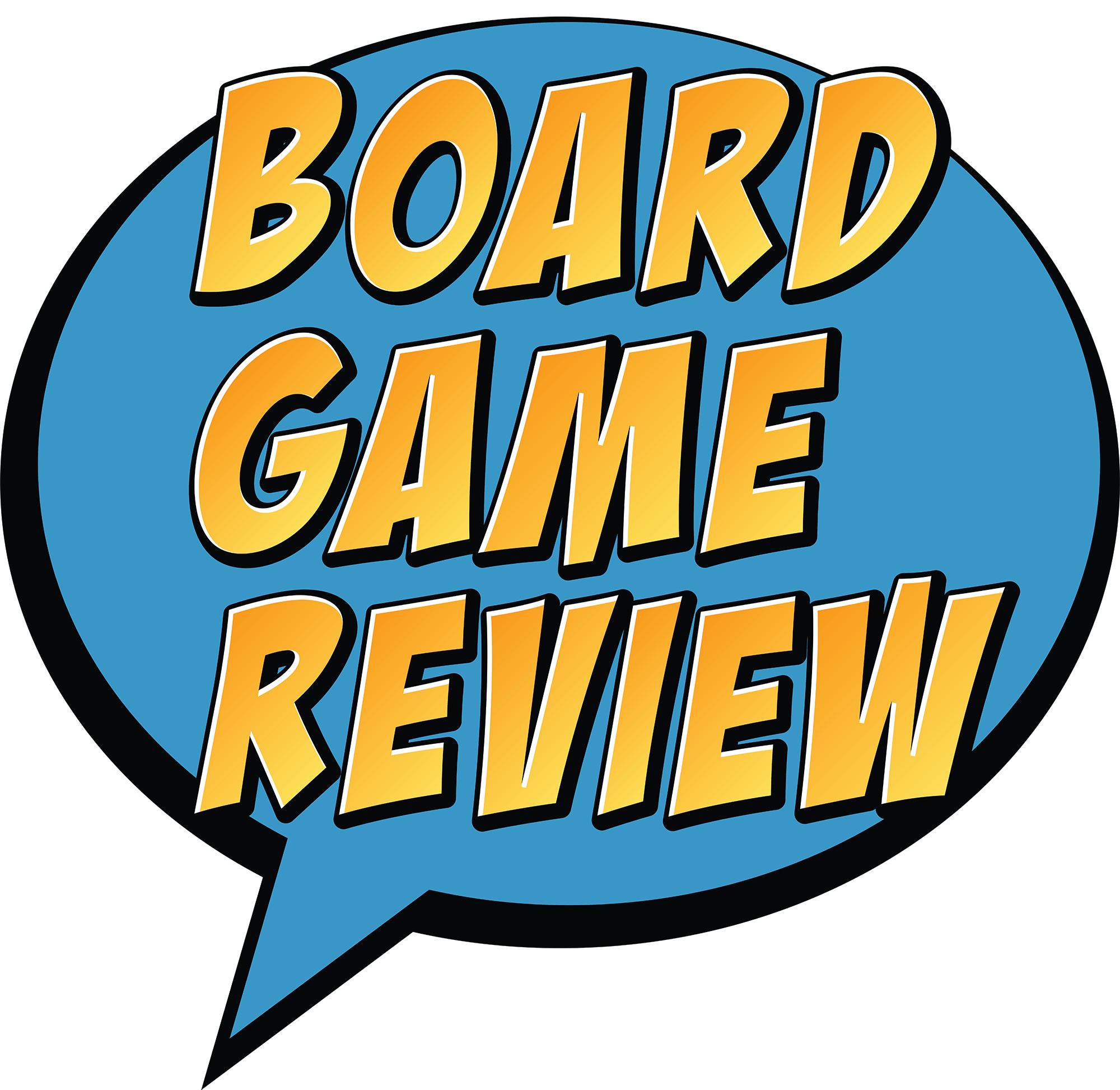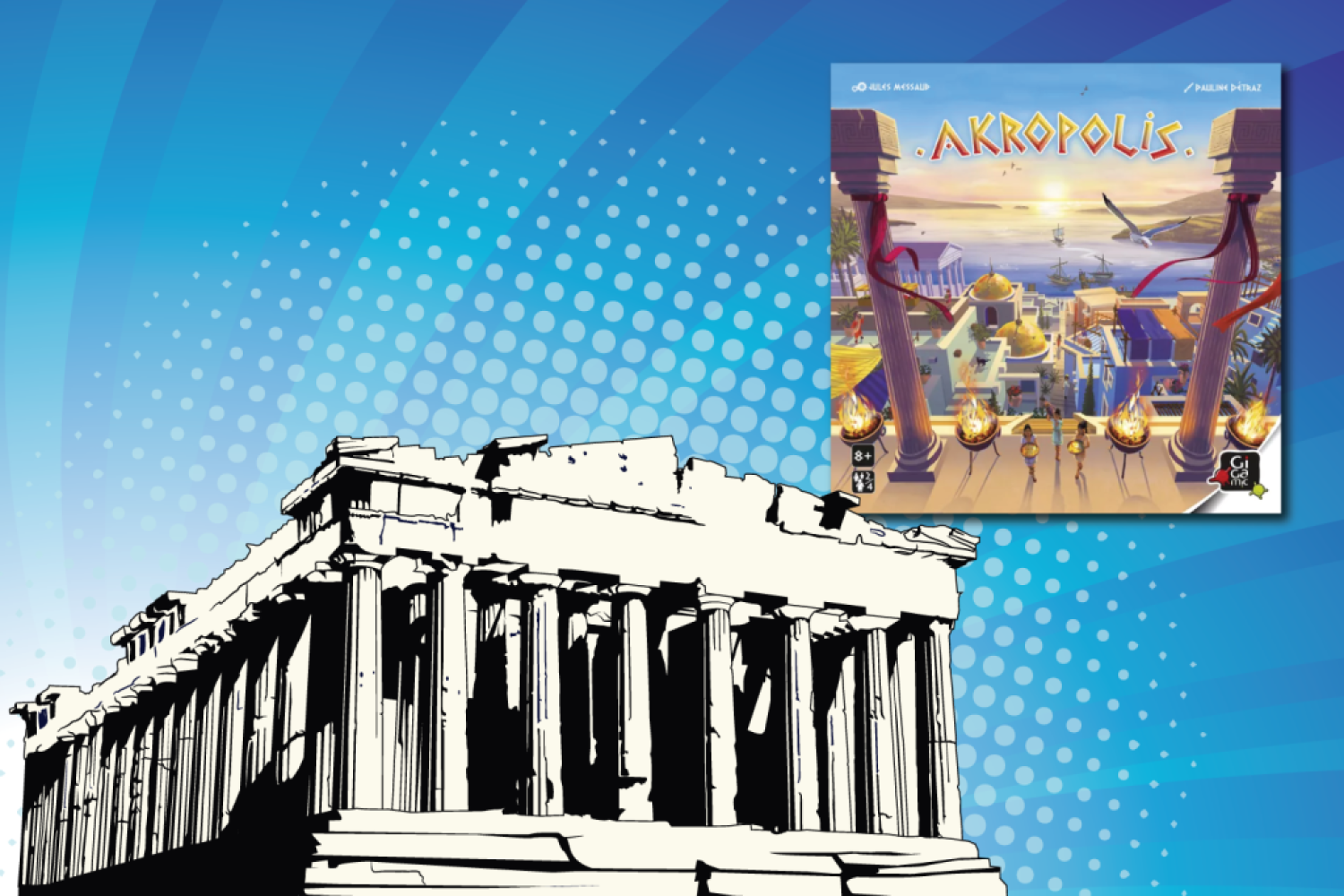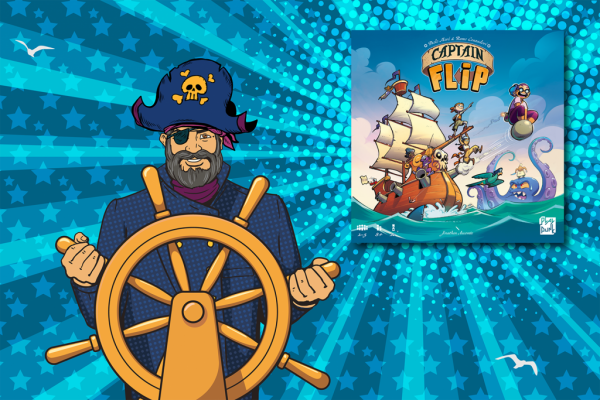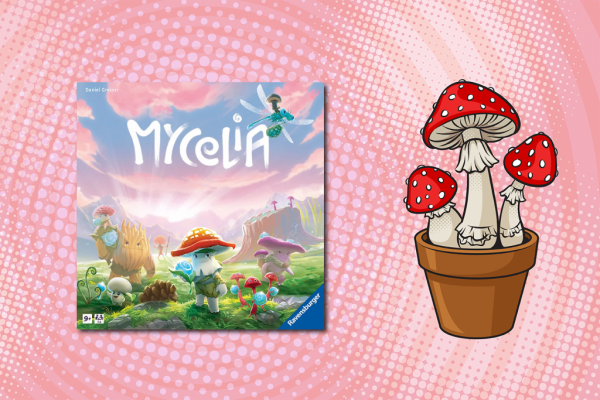Akropolis Review
Imagine Quadropolis and NMBR9 made a baby together, that newborn board game would be Akropolis.
Akropolis was my most anticipated game of the UK Games Expo, and subsequent plays have reinforced my overwhelming hotness that I feel towards this new release. Well it’s a new release at the time of writing, it may be an old classic by the time you read this. If that is the case, hello to the future! Do you have hover boards yet?
I’m sure there must be a spelling mistake in the name of the board game Akropolis. I think it would be much more apt to be Accropolis. Especially to French-speakers, who will know that accro translates to addicted. That pretty much sums up my experience with Akropolis so far – I am completely hooked on this tile laying puzzle. Let me tell you why…
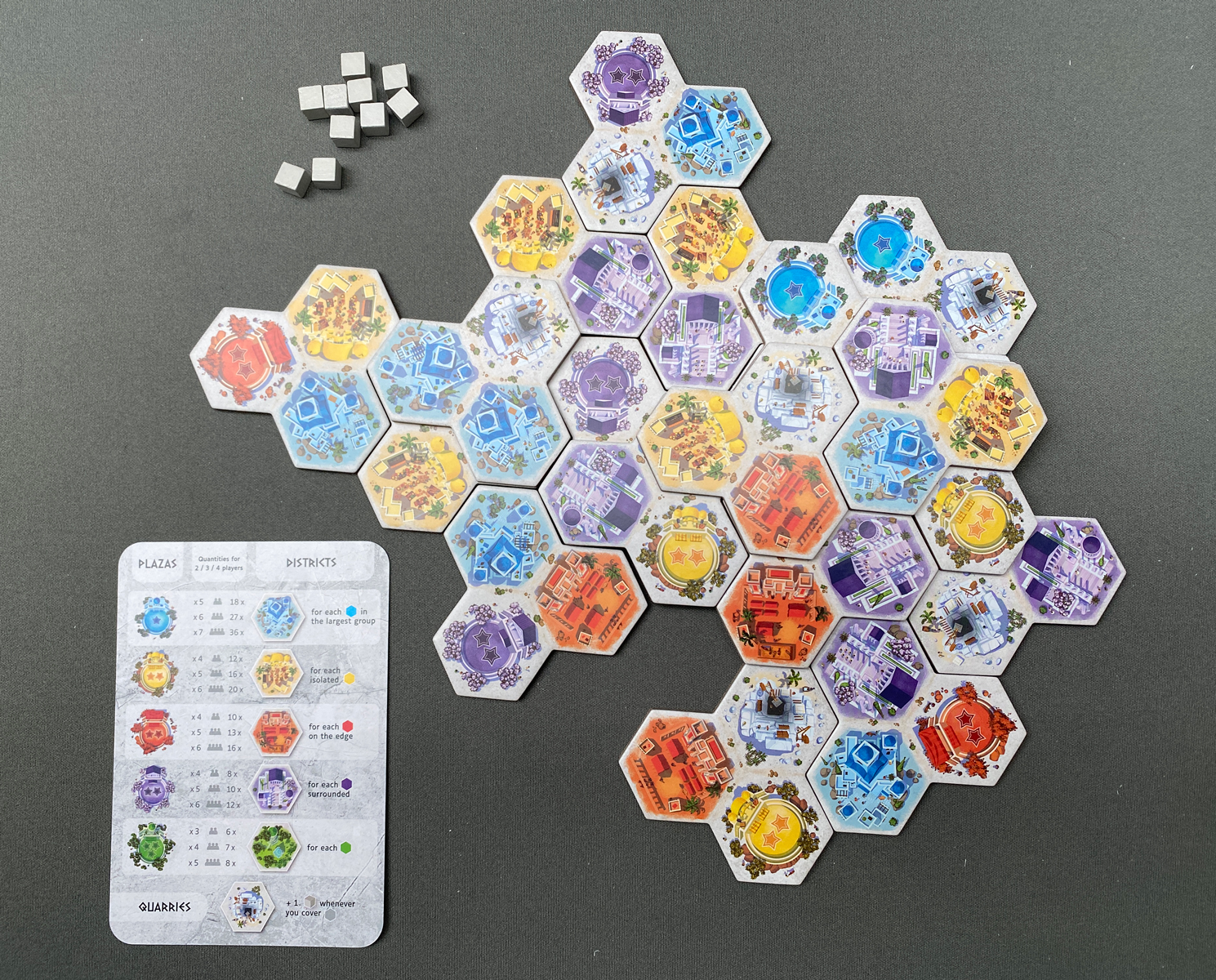
©boardgamereview.co.uk
Setup
The first thing you will notice when lifting the lid is the surprising lack of punchboard. That’s right, the tiles are already snug in their compartmentalised insert.
To set up the game you need to include the tiles relevant to the player count. Give ‘em a good ol’ tornado shuffle on the table. Tiles need to be stacked into piles equal to the number of players plus one. So in a three player game, they need to be stacks of four. I say need, they don’t have to be in stacks at all, but it makes it easier to keep track of how many rounds are left which is useful. There will be one tile left over – that’s okay! Then spread out one of the stacks with the one left over in the middle of the table to create the river.
That’s the admin part done, other than that allocate one starting tile and a player aid to each player. Establish a first player and give them a grey cube, the next player will take two cubes, and so on. Finally, take a stack of tiles, plus that one that was left over, and form a river in the middle of the table. I think you’ll agree that was a breeze!
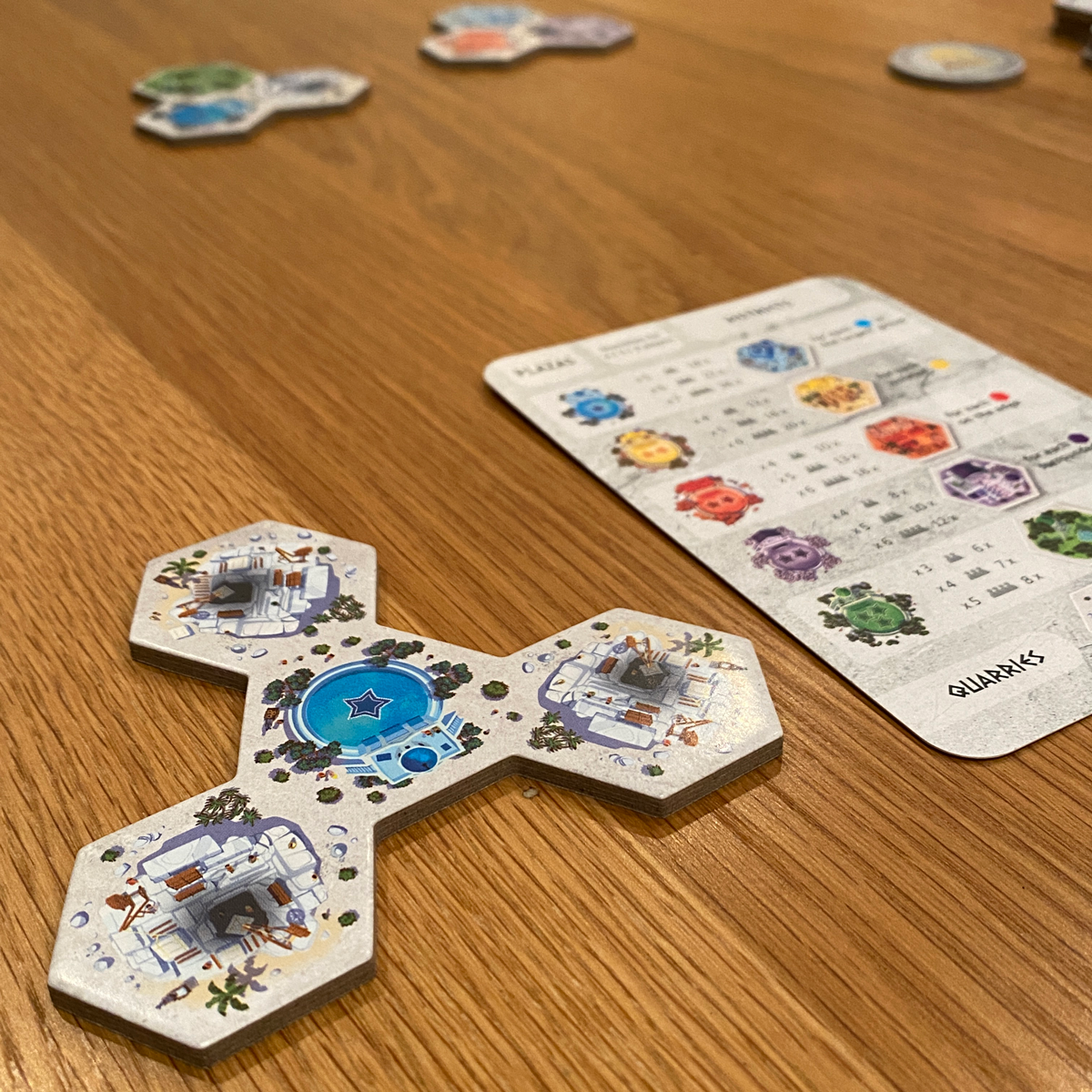
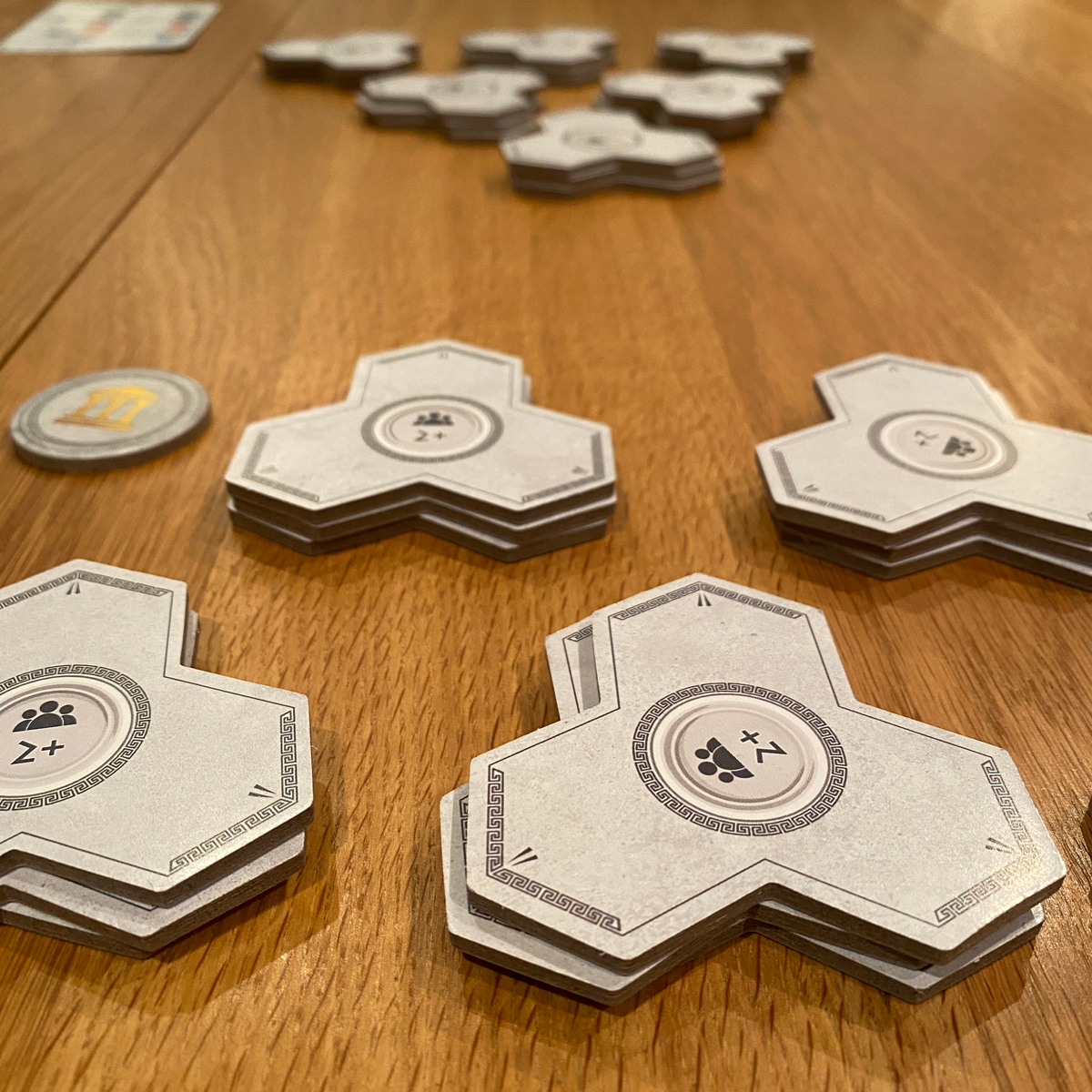
©boardgamereview.co.uk
Gameplay
In Akropolis you want to be the player with the most points at the end of the game. Points are scored by placing certain districts in specific ways. For example the red barracks need to be on the edge of your city so the soldiers can watch over it to qualify for scoring. In contrast the purple temples need to be easily accessible and must be surrounded by other tiles to score.
Each district scores according to the number of visible stars in plazas of the matching colour. Each colour has a set value of stars on the plazas. Blue residential tiles are one star, but there are more of them. Green parklands are three stars, but only a few will be available.
Fairly straightforward, but things get a little more spicy as districts will count towards more points the higher up they are in your city. Districts on the base level times the star score by one, tiles on a second level times stars by two, third – three, and so on. When building up, tiles must cover part of at least two tiles below it. This stops people just building up and up on one tile.
On the first player’s turn they get to choose first, the first tile in the row is free, but to access the next tile in the row, you need to discard one of those grey cubes that you were issued. You can earn more grey tiles by building on top of mines, aka the white ones. Every time you cover a mine you get a grey resource. This is the only way to gain more cubes. Once the first player makes their selection, the next player can choose a tile. Again, the first tile is free and they can pay cubes to go further along the river. Play continues round in this way. The first player of each round will choose one more tile than everyone else. This evens out over the course of the game. After the first player has chosen their second tile, the final tile moves to the front of the river and a new stack of tiles is placed for selection. The first player moves round and you go again.
The game ends when all the tiles have been drawn, leaving one lonely tile to get discarded. Scores are then tallied using the included scorepad and the winner is declared.
There is also variant options included in the box to further replayability.
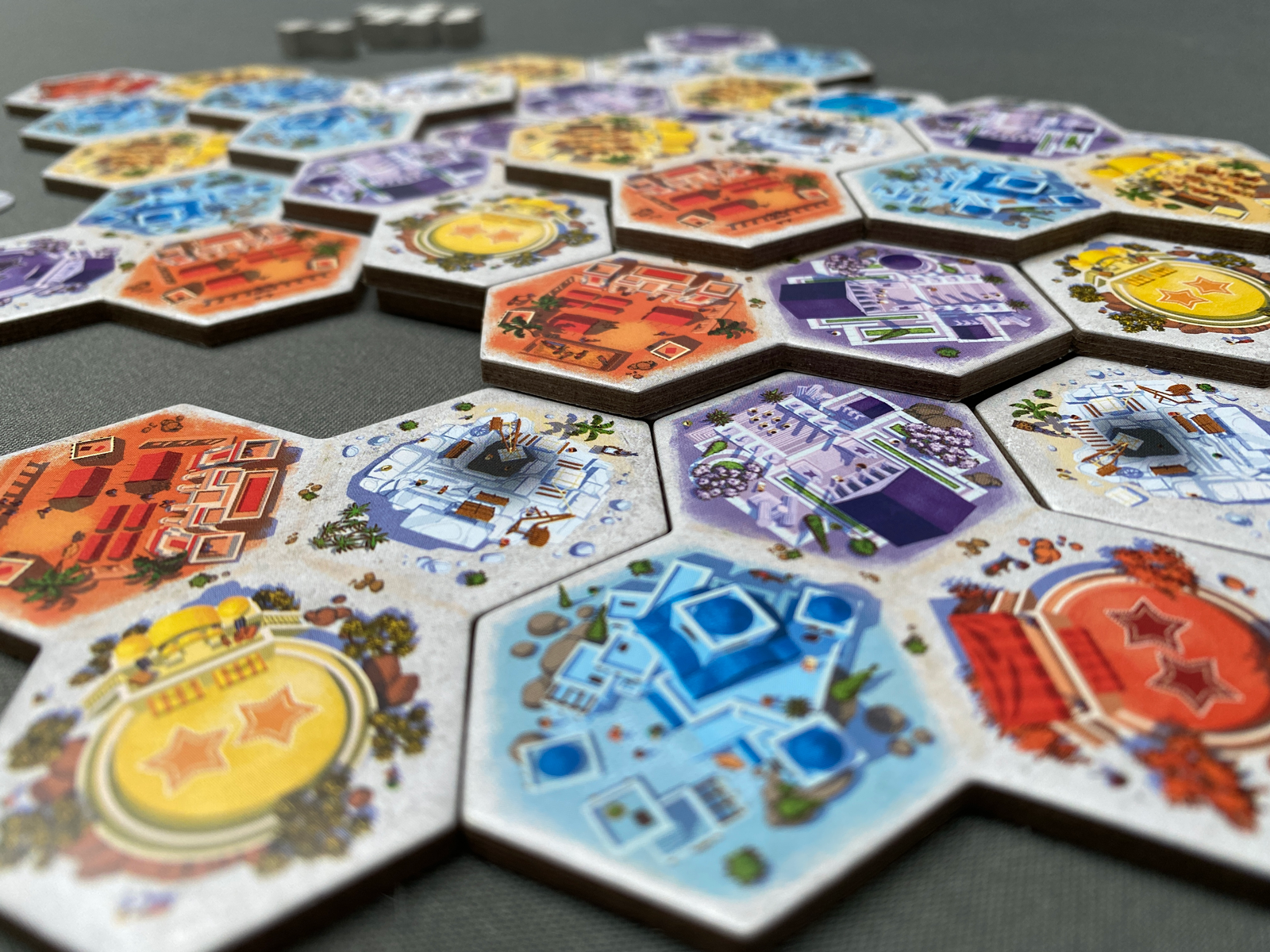
©boardgamereview.co.uk
What it’s like
Akropolis is a fabulous puzzle. There is some luck involved, like any game that involves a random river. However, I’m confident it isn’t too luck dependant. You could be desperate for a piece, but not be able to get it ahead of the first player. Even worse for me is seeing the perfect piece for my opponent turned over when it is their turn! For me, this means your strategy changes and evolves over the course of playing the board game and that is part of the experience. In the same way as you might need to adapt your strategy and leave options open when playing something like Calico or Azul.
I think one of the big stumbling blocks for new players is seizing the opportunity to build up, this is a necessity. I understand why, it’s so hard to cover up good tiles on the level below that it feels counter-intuitive at first. So much so, that after your first game when the scores are settled, you want to play again so that you can try and fix some of the mistakes you inevitably made on your first play.
Many would call Akropolis quite a solitary game. Obviously what you are building in front of you is of the upmost importance. However, it is also really important to make sure no player runs away with any one colour. So you will be constantly eyeing up the other cities around the table. Balancing concentrating on your own plan of action and thwarting your opponents often enough to ensure they don’t steamroller your sky-bound city! It’s not take that, they’ll be doing it to you too because it is a necessity. You will realise its importance, when one player nabs all the green parks and stars for the first time and your mix of blues, reds and yellows just doesn’t stack up against it.
The other lovely thing about Akropolis is the time vs strategy. It’s a lovely weight puzzle that leaves you wanting more. It doesn’t take too long and yet you feel like you have played something worthwhile that has got the grey brain cells whirring.
The box says it is for players eight years and over. While I think a seven or eight year old will grasp how to play, I think they probably need to be closer to ten to be competitive. As always it depends on the child, but I will be waiting to play this more often with my youngest.
The variants included for scoring help mix things up a little and certainly ramp up the scores that can be achieved. They also tax the brain a little more. I will definitely add them in from time to time and its nice they are included.
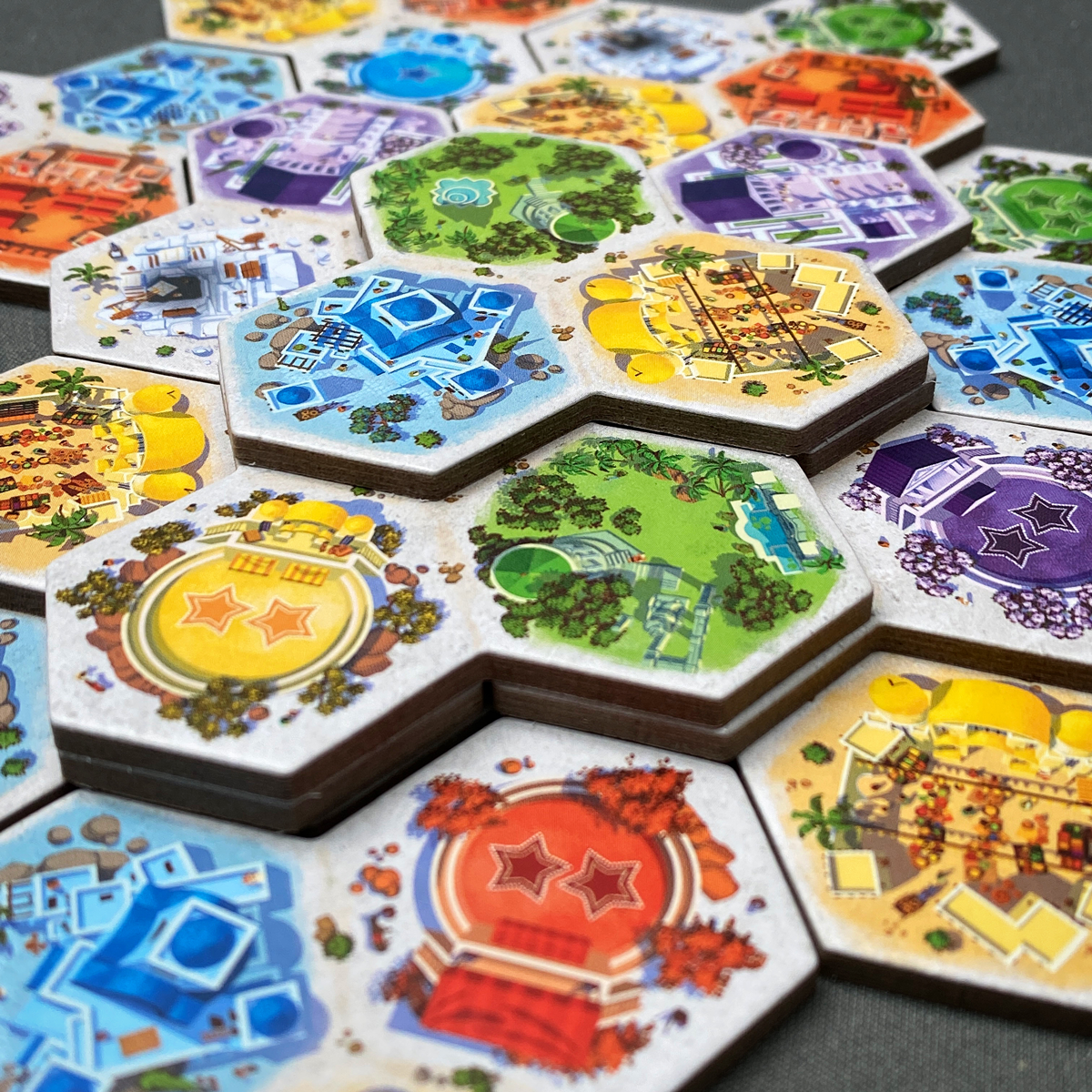
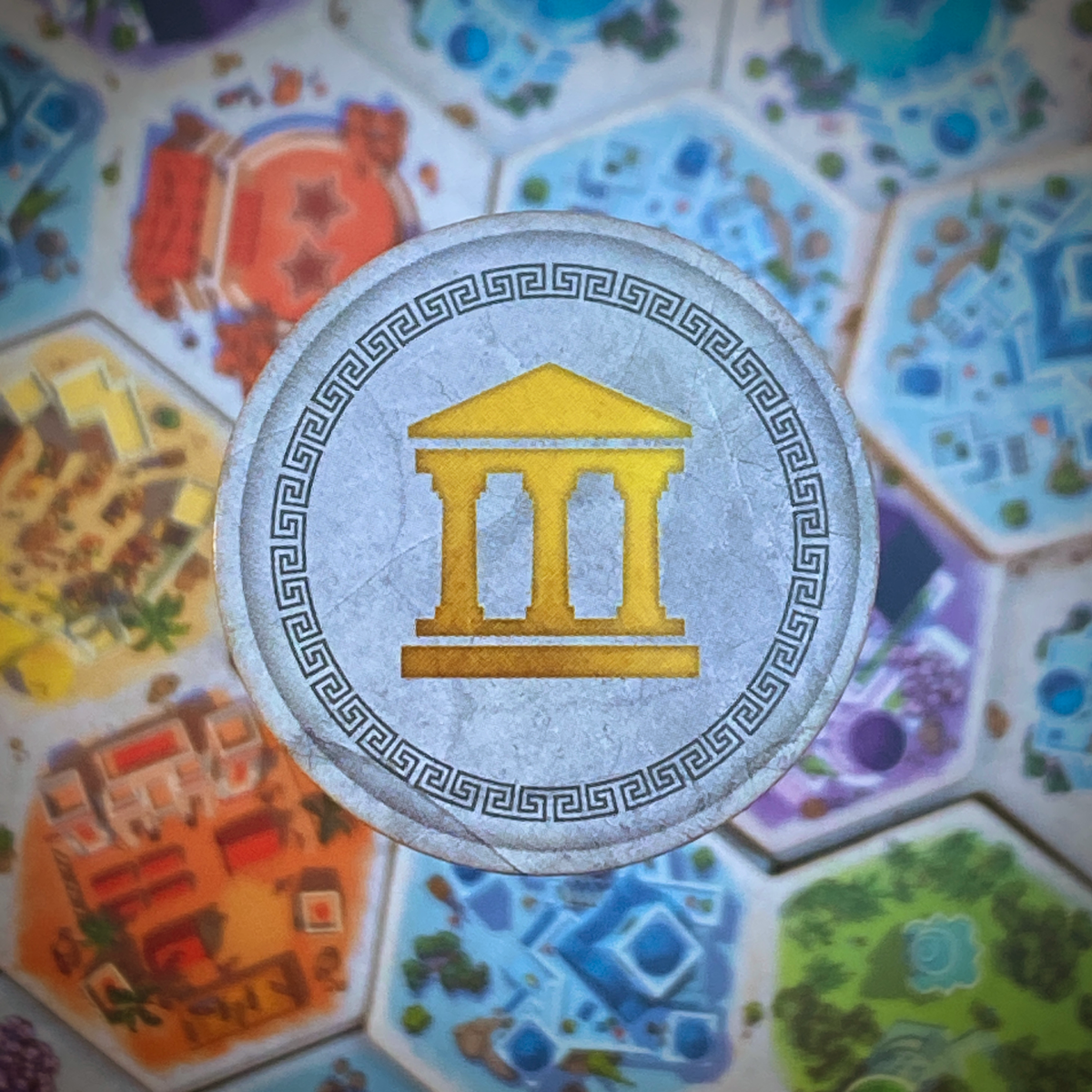
©boardgamereview.co.uk
Table Presence
The tiles are satisfyingly chunky and colourful. I’m not sure they do much to help those with colour vision deficiency but each district has an illustration that’s unique to its colour. The illustrations are good and I personally love the palette used. Despite it being understated it still zings on the tabletop. Building the tiles up gives each player’s city a very pleasing appearance towards the end of the game.
The grey cubes are a little lack lustre but perfectly utilitarian. I like the inclusion of the player aids. They do their job perfectly as a handy little reference for new players and even include the variant rules on the back. The rulebook is clear and concise too with nice illustrations scattered throughout.
The box has a compartmentalised cardboard interior which works great. There are a few underused compartments and the wishful thinker in me hopes this is to house an expansion with more tiles and districts, maybe even a fifth player and solo mode! The latter of which was surprisingly lacking and could’ve easily been included.
The included scorepad really helps make the working out less complicated than you think it will be. Once you get to grips with the concept working out the scores is straight-forward.
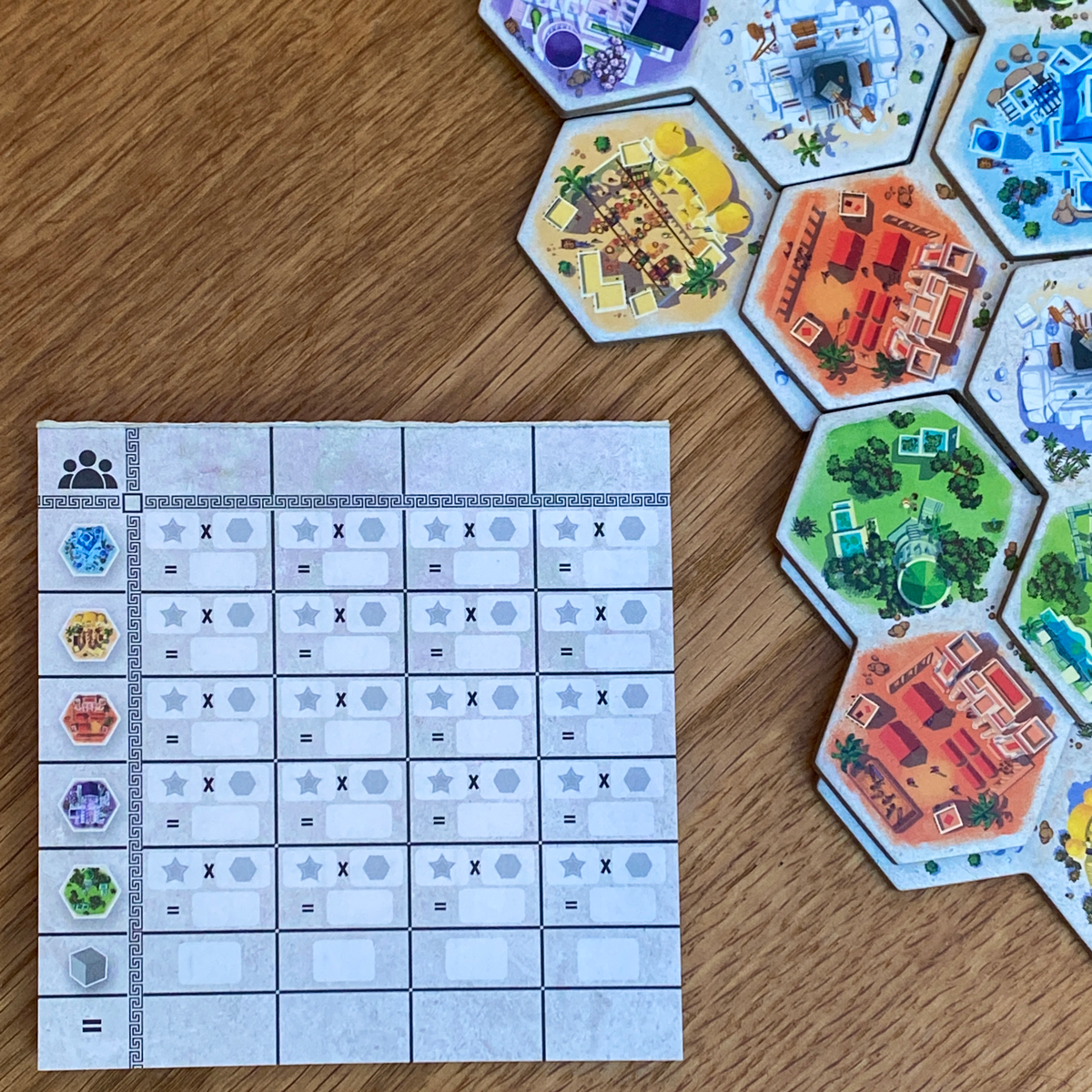
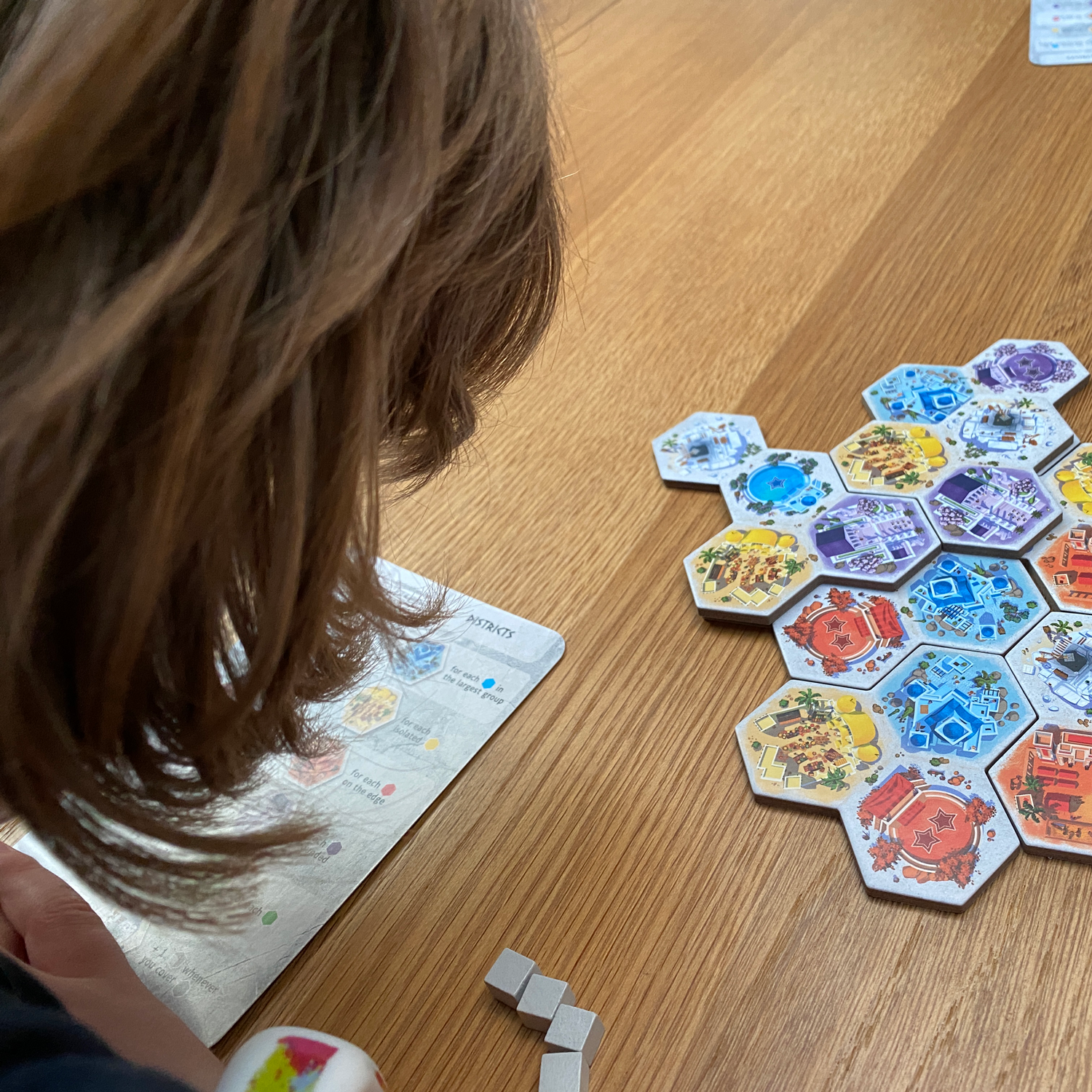
©boardgamereview.co.uk
What the kids thought
Max (7): It’s quite good, but a bit tricky for me. I like how the tiles get you more points the higher up the city they are.
George (11): It was a bit tricky at first but as I went along it got easier. I think it’s really fun and I enjoy playing it. I like the box art too.
Harrison (14): I like Akropolis, it’s fun and a good game to play as a family. I like building up the tiers of the city. I also like how picking last isn’t always a disadvantage as other players have to pay to get tiles that are further along.
Final thoughts on Akropolis
You’ll pick up strong undertones of Calico, Cascadia and Quadropolis with hints of NMBR 9 when playing this, but that is no bad thing in my opinion, these are all superb games. Certainly if you are looking for another game to scratch a similar itch, Akropolis should be seriously considered.
Akropolis is easy to learn and teach, it offers plenty to burn the brain while playing, and will offer oodles of enjoyment in succinct doses! It certainly never outstays its welcome with games generally lasting 30-45 minutes. You will be left wanting more. So much so we will regularly play back-to-back games.
I like how it plays just as well at two players as it does at three and four. Had a solo mode been included, or a fifth player that would’ve been amazing… who knows what a future expansion may hold though… hint, hint!
With thirteen plays in about two weeks, this has hit the table a lot since I picked it up at UKGE. That’s because it is really gratifying! Akropolis is an incredible puzzly game, that for me, is up there with the greats in the genre. It also helps that it’s the sort of puzzle my brain really likes.
This baffling puzzle beguiles the time away very pleasantly indeed. I will reiterate, I am addicted to Akropolis!
Key Facts
Number of players: 2 to 4
Board Game Review Recommended Age: 10+
Publisher’s Recommended Age: 8+
Playing Time: 3 minutes
Setting Up and Take Down Time: 3 minutes
Designers: Jules Messaud
Publisher: Gigamic
RRP: £25.00
Summary
I am blown away by the perplexing but pleasant pattern-building, tile-laying gameplay of Akropolis. I am ridiculously full of gusto for the entire board game. I really urge you to play it if you get the chance!
-
Artwork and Components
-
Complexity
-
Instructions
-
Interaction
-
Value for Money
Overall
Pros
- Easy to learn and teach
- Fantastic puzzle
- Lovely chunky and colourful tiles
- Point salad scoring opportunities
- Works well at all player counts
Cons
- Lack of a solo mode
- Luck of the draw
- The grey cubes could be improved
Need more games?
If you already own The Crew: The Quest for Planet Nine and enjoy it, or are looking for other inspiration, you might also like these similar games:
- Quadropolis
- NMBR 9
- Cascadia
- Calico
Reviewer’s Note
For clarity: we don’t get paid for our reviews.
We may however earn a tincy wincy commission if you buy a game having clicked one of our affiliate links like the one above… this hopefully gives us a bit of pocket money towards hosting costs and new games to review!
As an Amazon Associate I earn from qualifying purchases.
Board Game Review is a brand ambassador for Out of Town Games.
We also are an affiliate of Board Game Prices, a price comparison website for Board Games.
These affiliate advertising programs are designed to provide a means for sites to earn advertising fees by advertising and linking to their websites.
